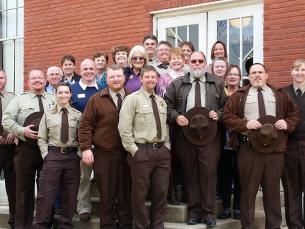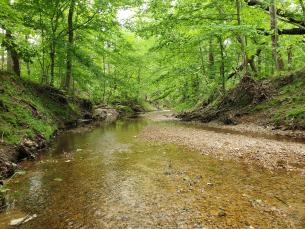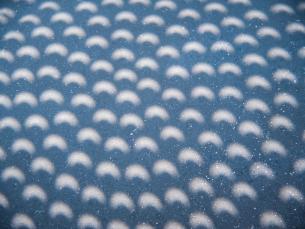
Photo Essay: Stories in Stones
By: Heather RunyanVillage Creek State Park is located in east Arkansas on Crowley’s Ridge. This park exists to help protect the unique natural, cultural, and historical resources of the ridge, including things like fossils. The fossils found at Village Creek State Park tell the story of this unique land. In this photo essay, we will take a closer look.
Although at first glance it might appear to be all one layer, Crowley’s Ridge is made up of different layers: (starting from the bottom) clay, sand and gravel, and loess. Each layer of the ridge comes from a different geologic period, also called an epoch, in the land’s story. The fossils found in these layers tells us what the area was like when that section was formed.
During the Eocene Epoch this land was under a shallow sea and the foundations of Crowley’s Ridge were formed as layers of clay, as well as a little sand.
During this time many creatures swam in the shallow sea that covered the area. These included creatures like fish, sharks, and stingray. While Lake Dunn and Lake Austell were being created here at Village Creek State Park in the 1970s, one of the most common fossil types found by builders was shark teeth. Today you can see some of the fossils they found by visiting the park's Discovery Room.
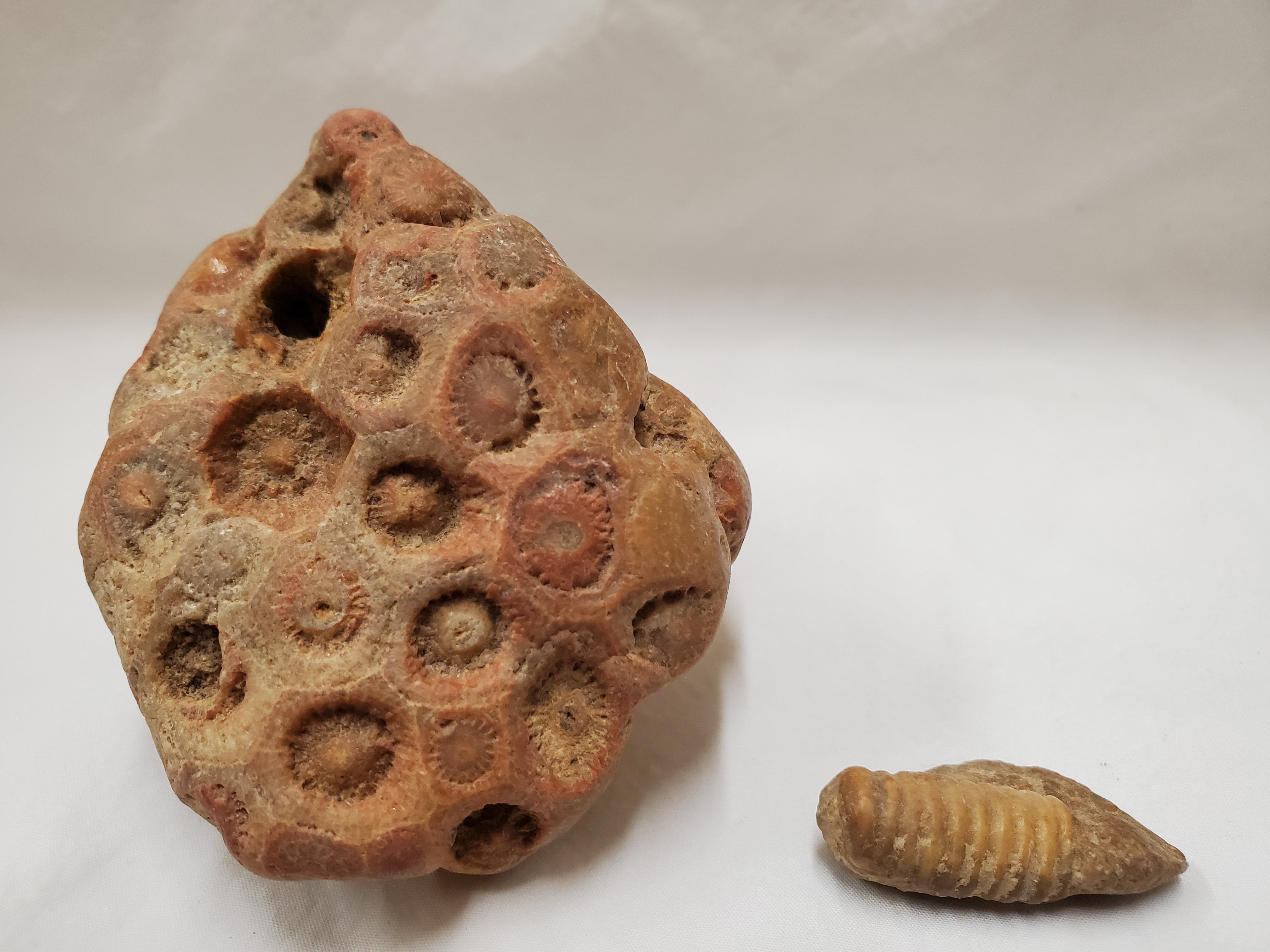
Some of the creatures from this epoch didn’t move around as much as sharks. Things like coral (left) formed fixed colonies. Other creatures, like the crinoids (right), would anchor themselves to the sea floor.
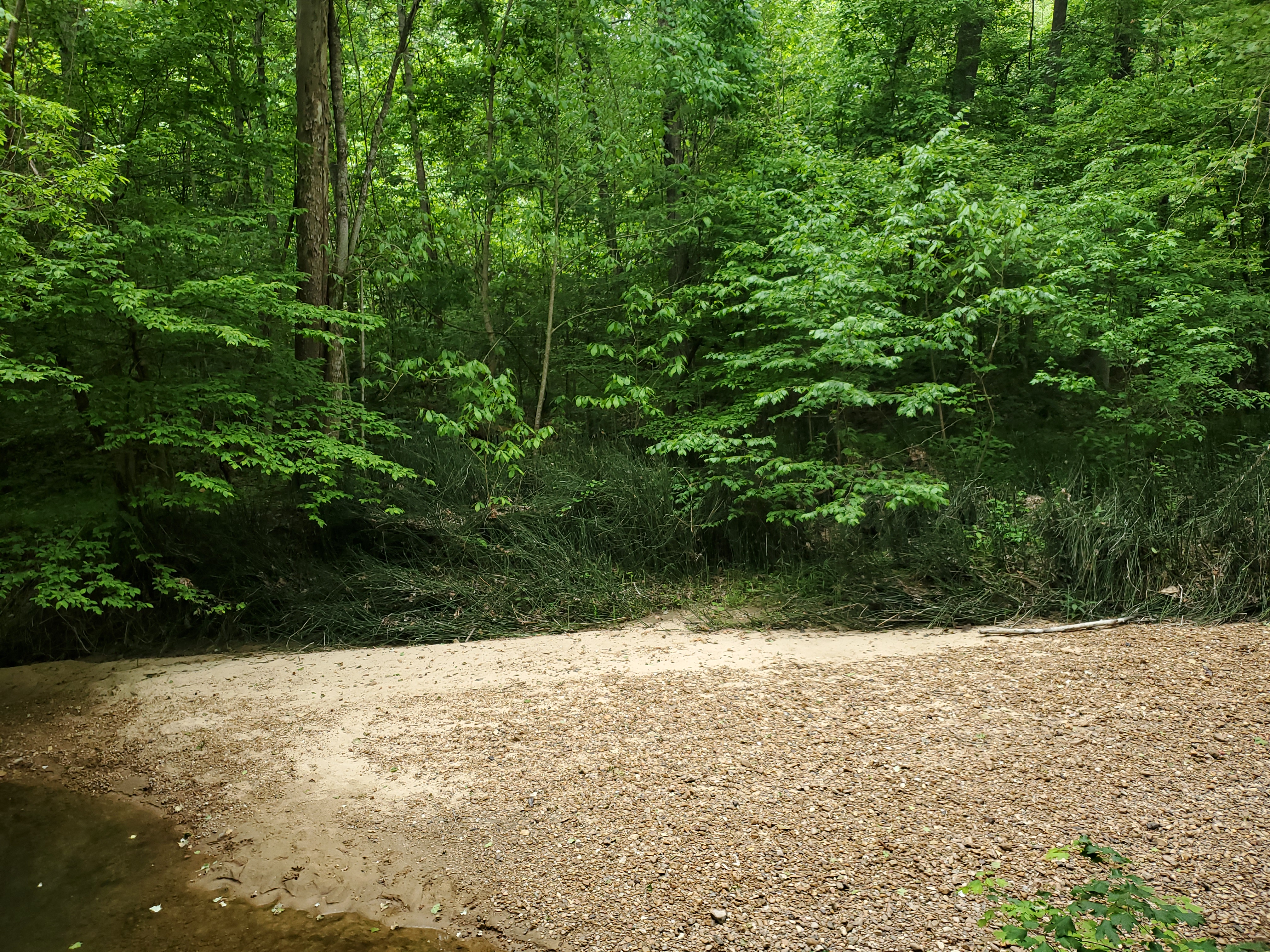
Time moved on and so did the sea. As the water receded towards the end of and after the Eocene Epoch, the land went through a change from lagoon, to bay, and eventually to a rainforest swamp. The receding waters left a layer of sand and gravel that you can still see in the park’s creek beds.
During the Pliocene Epoch large animals roamed this land, including mastodon and ancient horses. In our area, the most common evidence of these animals are their teeth. The fossilized horse tooth in the picture is about the length and depth of a deck of playing cards, but only half the width. In comparison, it would take about 10 horse teeth to equal the size of one mastodon tooth.
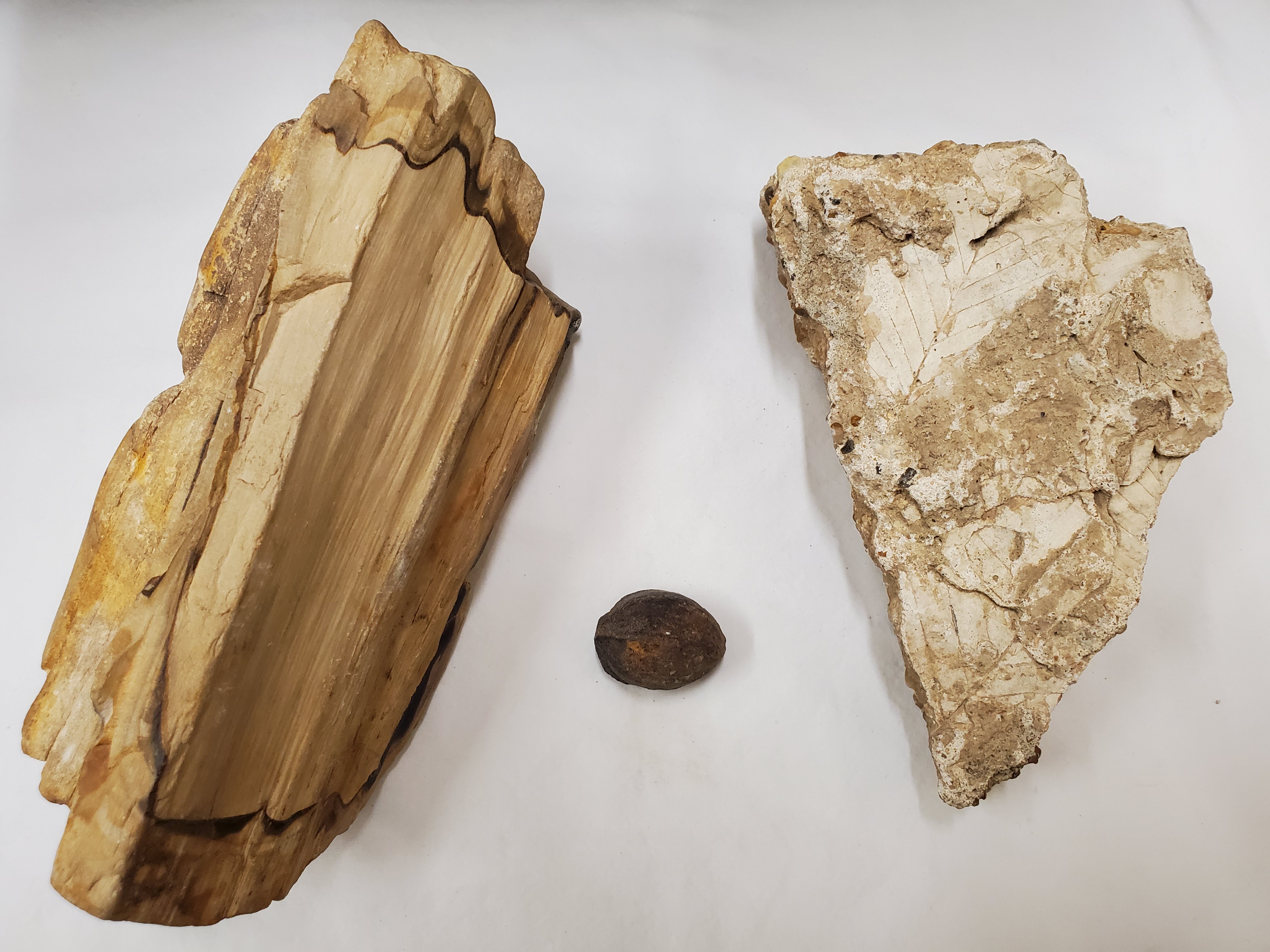
The plants of the Pliocene Epoch also left fossil records. Fossils that can be seen on Crowley’s Ridge include things like petrified wood and nuts, as well as the imprints of leaves. You can also see imprint fossils from bark and ferns.
The Pleistocene Epoch saw glacier-melt waters forming two giant rivers that carved out the Delta of land on either side of Crowley’s Ridge. These rivers carried rock dust, called loess, that had been ground down by the glaciers. Loess makes up most of the height of current-day Crowley’s Ridge. The light soil erodes easily, leading to the bluffs seen around the park, like these from the Military Road Trail.
These may look like fossilized eggs or potatoes, but they are not fossils. Loess is mostly formed from limestone and is too acidic to form fossils. Sometimes though, you will find these fossil imposters, which are called loess puppets. They are made when tiny bits of mineral from the limestone collect on a root or pebble and form a chunk of calcium carbonate. The larger two loess puppets in this picture are slightly larger than a chicken egg, which is an average size for the ones found in the area.
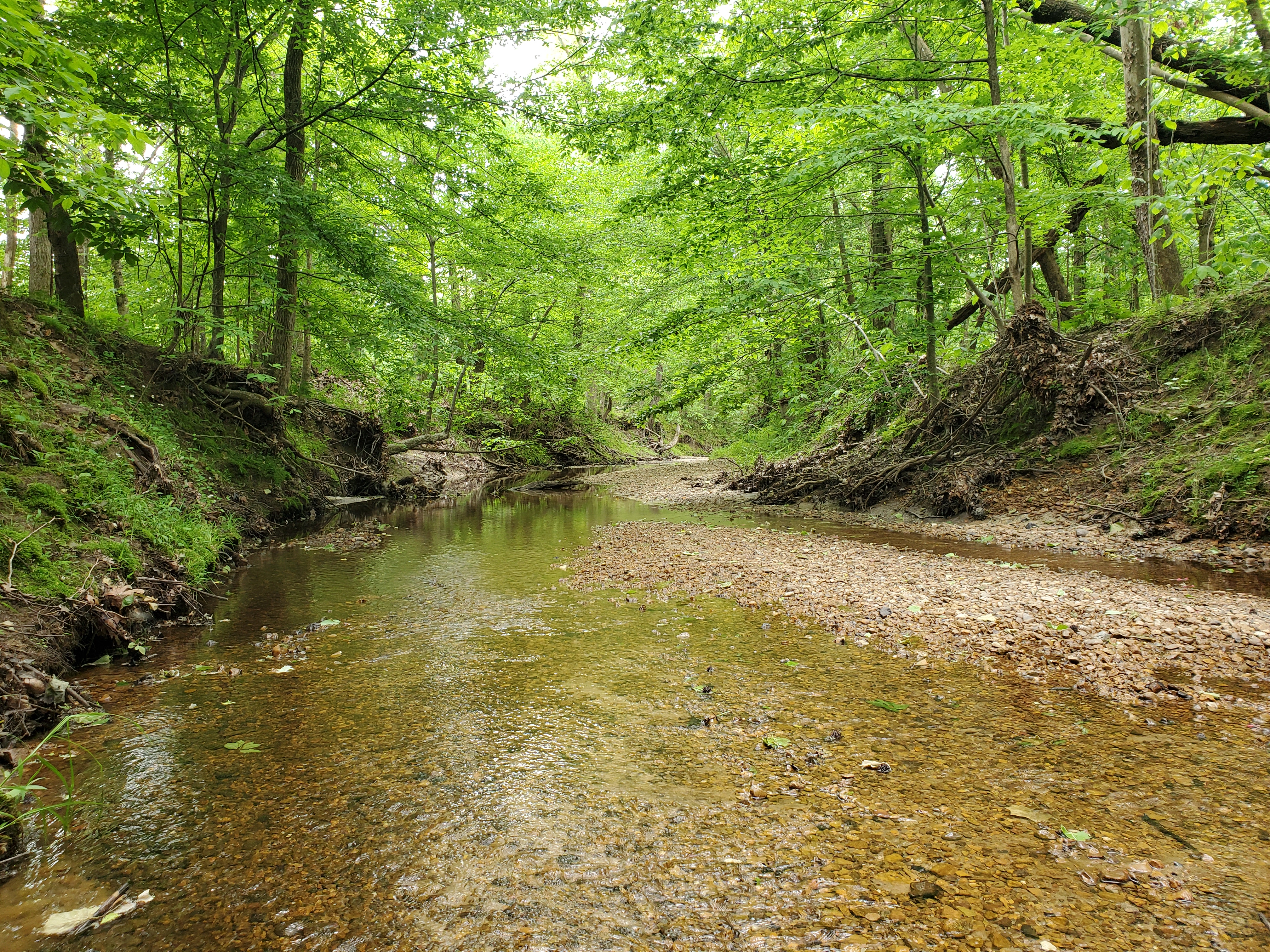
Many of our guests enjoy looking for fossils, especially in the creek beds, and we hope you get the chance to do so as well. Just remember that if you find one while you are here you can take a picture, but then you need to put the fossil back. The fossils at Village Creek State Park tell the story of our land and in the park they are protected so that guests can continue to discover that story for generations to come. Thank you for practicing Leave No Trace ethics while visiting the park!
